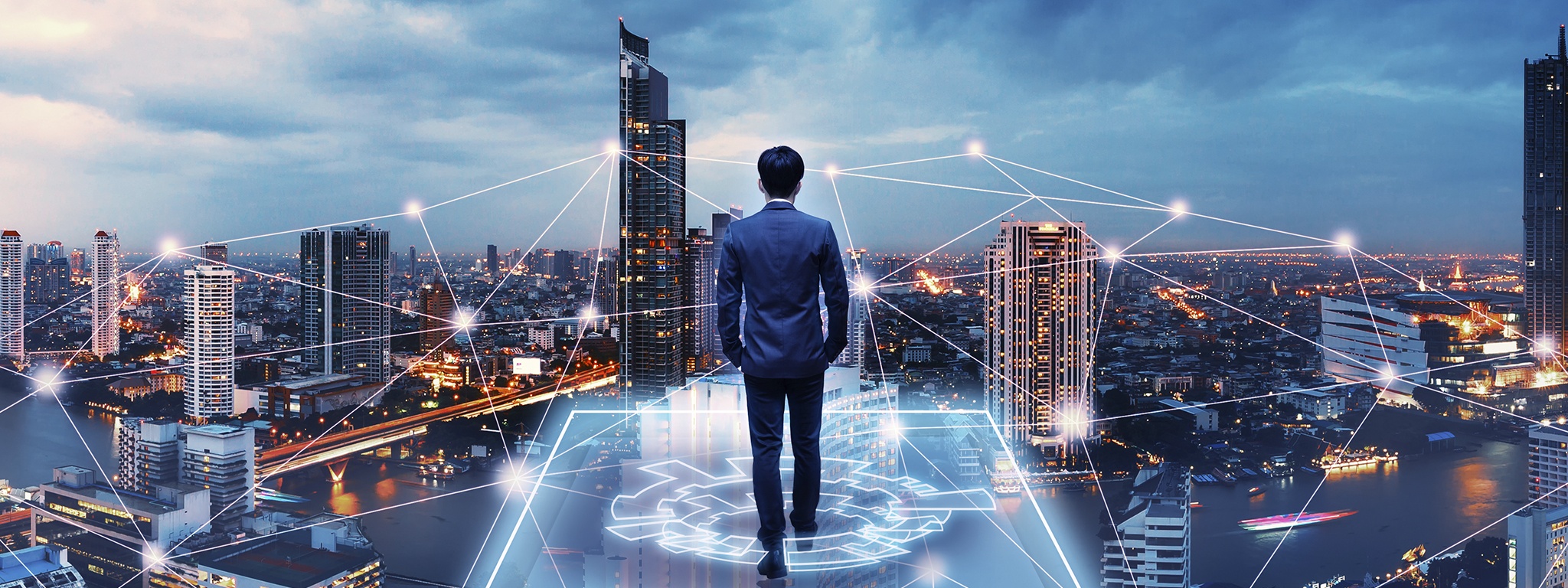Ask an Expert
Planning the right solution requires an understanding of your project and system requirements. Let Kingston's experts guide you.
Ask an Expert

Rob May is the founder and managing director of ramsac. He has a team of over 100 consultants working with him to deliver technology and cybersecurity services/support (and has done so for over 30 years).
Rob is the UK Ambassador for Cybersecurity for the Institute of Directors, and is ranked #5 in the Global rankings for Cyber Security Thought Leaders/Influencers. He is on the Advisory Board of The Cyber Resilience Centre for the South East, working with industry, academia and law enforcement. He is also an author, a thought leader, and an award-winning international speaker.
Edge computing means running fewer computing processes in the cloud and moving those processes (and data) closer to where it is being consumed, thus reducing latency and bandwidth use by minimizing the amount of long-distance data transfer between a client/device and a server (sometimes thousands of miles away).
The development of edge computing was driven by the exponential growth and demands of IoT (Internet of Things) devices, which connect to the internet for sending and receiving data from the cloud. But the rise of real-time applications that need processing at the edge and technology like 5G are rapidly driving the technology forward.
We often take much of this technology for granted. However, when we start to think of applications that can have a real impact on human life, such as self-driving cars, medical devices, or aircraft systems, there is an absolute need for these to react in real-time. Reducing the latency of data processing is therefore critical.
Edge computing hardware and services help resolve the problem by processing and storing data locally. An edge gateway can process data from an edge device, and then send only the relevant data back to the cloud for storage to save on bandwidth.
The definition of the edge of the network is a bit incongruous; some people think of the processor inside an IoT device as the network edge, but a router, an ISP, or a local edge server also fall within the definition. The key thing is proximity, with the edge of the network being physically close to the device and where it communicates with the internet.

This constant growth and demand on processing and enormous storage requirements are driving the growth and expansion of data centers and hybrid-cloud and while we see huge-scale adoption of public cloud, private cloud and small local data centers have never seen so much demand.
A critical subject that the industry and its users must continue to focus on and develop is cybersecurity and the need to ensure a perennial agenda item for security and resilience. Edge computing is another factor in our digital lives that increases attack vectors and widens the threat surface.
In the workplace and in our domestic lives, we continue to introduce more connected "smart" devices, and as we’ve increased the number of edge servers and IoT devices that contain built-in computers, there are copious opportunities for malicious hackers to attack and compromise these devices. It is imperative that data centers (of all sizes) are equipped to face the security challenges of our interconnected digital world.
An issue often joked about with the Internet of Things is that IoT is actually an acronym for the Internet of Threats! Part of the challenge is consumers not considering the security risks of what they are buying and deploying. Another is the physical challenge in a world where we do not easily have authentication by credentials or authority, such as a human individual. In this case, it’s essential that we figure out different ways to protect data.
Certainly, data at the edge needs appropriate deliberation, since it is often being handled by many different devices and by default may not be as secure as a centralized or cloud-based system. As we see the number of IoT devices continue to grow, it is a fundamental requirement that the industry works hard to understand any potential device security issues, and to make sure those systems can be properly secured. Data encryption is vital, along with appropriate security protocols and the correct access-control methods.
Edge computing inevitably requires increased local hardware. For example, an IoT camera needs an integral computer to send its raw video data to a web server. If we also want that device to run its own motion detection algorithms, it would need a much more sophisticated computer with increased processing power.

To meet the challenges outlined above, data center technology must continue to evolve: we need to look for optimized storage capacity, deploy faster servers, and ensure widespread use of hardware encryption and more effective compression. Simply transitioning from SAS (Serial Attached SCSI) to SATA or NVMe Enterprise SSD (Solid-State Drives) can have a dramatic impact in reducing power usage when extrapolated to the level of entire data centers.
We will also see more widespread use of 3D NAND (or V NAND) which is high-performance, high-capacity, and high-scalability flash technology that stacks a type of non-volatile flash memory chip (the memory cells are stacked vertically in multiple layers). The purpose of this technology is to make devices faster and provide greater capacity while running more efficiently using less energy.
Navigating this increasingly complex IT ecosystem is far simpler when you can call on the services of a reputable hardware vendor; a supplier of memory and storage products who happily works with you on a personal level to ensure that the products you are purchasing align with your short, medium, and long-term IT and business goals. This is where Kingston Technology's "Ask an Expert" Team excels.
With over 30 years’ experience, Kingston has the knowledge, agility, and longevity to fully enable both data centers and enterprises to respond to the challenges and opportunities presented by the increase in 5G, IoT, and edge computing.
#KingstonIsWithYou

Planning the right solution requires an understanding of your project and system requirements. Let Kingston's experts guide you.
Ask an Expert
When you start with Kingston, choosing memory is easy.
With over 35 years of expertise, Kingston has the knowledge and resources you need to choose memory with confidence.
Simply enter the make and model number or system part number of the computer system or digital device to find the Kingston products you need.
Search by either the Kingston part number, distributor part number or manufacturer equivalent part number.